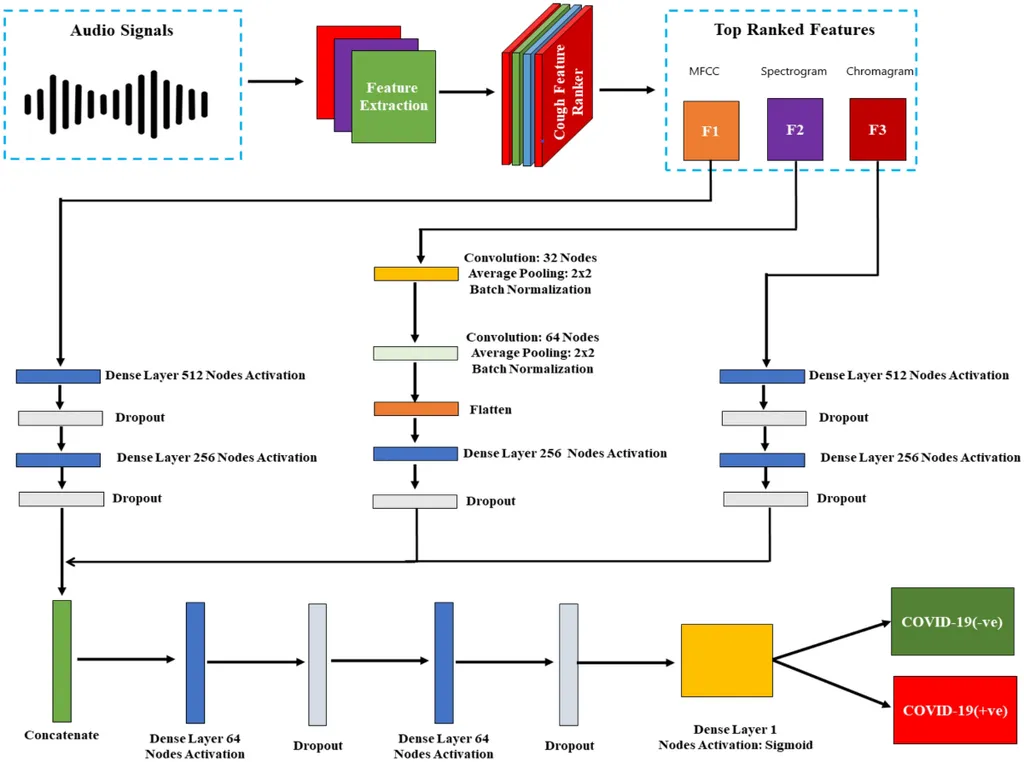In an era where voice recognition systems are becoming ubiquitous, the threat of spoofing attacks and the challenges posed by environmental noise and natural variations in speaker voices have become significant hurdles. A groundbreaking study led by Mahfudz Ahnan Al Faruq from the Informatics Engineering department at Muhammadiyah Prof. Dr. Hamka University in Jakarta, Indonesia, introduces a Voice Frequency Detector (VFD) framework that promises to enhance biometric security, particularly in sectors where robust authentication is critical, such as energy and finance.
The VFD framework addresses these challenges by leveraging dynamic vocal features like fundamental frequency (F0), Mel-Frequency Cepstral Coefficients (MFCCs), and formant structures. These features are integrated with a hybrid CNN-BiLSTM deep learning model and attention mechanisms to perform robust spectral-temporal analysis. “Our system is designed to adapt to the natural variations in a person’s voice due to health, emotion, or aging, making it more reliable for long-term use,” explains Al Faruq.
One of the standout features of the VFD framework is its anti-spoofing subsystem, which employs spectral flatness and phase distortion features to detect synthetic and replayed voices. This is particularly relevant in the energy sector, where secure access to control systems and sensitive data is paramount. “The anti-spoofing mechanism ensures that our system can distinguish between genuine and fraudulent attempts, providing an additional layer of security,” adds Al Faruq.
The methodology involves signal preprocessing using Wiener filtering and voice activity detection, followed by feature extraction and score fusion, which combines deep learning outputs with anti-spoofing results. Experiments conducted on a dataset of 100 speakers and 1,000 spoofed samples demonstrated strong performance, achieving an Equal Error Rate (EER) of 2.8% in controlled conditions and 5.0% in noisy environments. The system also achieved over 91% accuracy against replay, synthetic, and voice conversion attacks.
Statistical analysis revealed that MFCCs are the most discriminative feature, contributing to 62% of the variance. This finding underscores the importance of MFCCs in voice biometrics and highlights the potential for further optimization in future research.
The VFD framework offers a secure, adaptive, and practical voice authentication solution suitable for a wide range of applications, including finance, IoT, and access control. As the energy sector increasingly adopts smart technologies and remote access systems, the need for robust biometric security solutions becomes ever more critical. This research, published in the International Journal of Emerging Research in Engineering, Science, and Management (translated as “Journal of Emerging Research in Engineering, Science, and Management”), paves the way for more secure and reliable voice recognition systems.
Looking ahead, the research team envisions future enhancements that may explore multi-modal integration and transformer-based architectures for broader applicability. As Mahfudz Ahnan Al Faruq notes, “The potential for integrating multiple biometric modalities and advanced architectures like transformers could further enhance the system’s accuracy and adaptability, making it even more suitable for diverse applications.”
In conclusion, the VFD framework represents a significant advancement in the field of voice biometrics, offering a robust and secure solution that addresses the challenges of spoofing attacks, environmental noise, and natural variations in speaker voices. Its potential applications in the energy sector and beyond highlight the importance of ongoing research and innovation in biometric security.

